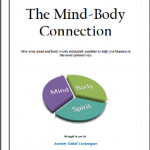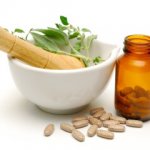Major or Clinical Depression
The feeling of being depressed is something that most people experience a few times in their life, especially when going through a particularly troubling or sorrowful time. Depression in this case is perfectly normal, and should not be confused with the mental disorder known as clinical depression (major depression).

This disorder is usually marked by extended periods of extreme sadness, often even when the apparent trigger for the depression has long gone.
Clinical depression can be categorized into a few different types, each of which has very different symptoms.
Types of Clinical Depression
Following are some of the other common types of (major) clinical depression and their symptoms. All these different types, plus many other lesser known categories, all fall under clinical depression.
People who suffer from these types of depression, have clinical depression symptoms, where they feel extremely euphoric sometimes, then suddenly fall into a depressive stupor. Both stages may last from a few minutes to several weeks on end.
This is experienced by women who have just given birth. It causes a new mother to feel incapable of taking care of her baby. Many believe that the cause of this condition is the new mother’s uncertainty on how to handle her new responsibilities.
Bipolar disorder is another form of depression, but it has some specific trademarks. People who suffer from this have cycles of mania (manic depression) when they experience highs and lows.
-
Manic Depression
You can also have a period in between manic or depressive episodes when you feel normal. Your mood may change gradually or it can be dramatic. When you feel depressed, you exhibit the typical depression symptoms. During the manic phase you may be overactive, extremely talkative, and have a lot of energy leading to unwise behavior.
-
Dysthymia
This is one of the milder forms of depression. It is usually manifested by a loss of appetite, sleeping difficulties, unexplained tiredness and very low self-esteem.
-
Cyclothymia
This is a condition very similar to manic depressive disorder because of the extreme changes in mood. However, the shifts here are usually faster and the phases don’t last for more than a few days.
This is known as SAD and occurs only during particular seasons. Fall and winter seem to be the most common seasons for this type of clinical depression. Symptoms expressed are typical of a depressed individual.
As all of the above fall under the one category, it may be rather confusing to some people, who may have thought that clinical depression is just one particular type of the disorder.
Clinical depression is actually only a medical term that doctors use to refer to depression.
Endogenous Depression or Melancholic Depression
This is a sub-type of clinical depression. The word endogenous means “from within”. From the scientific standpoint, this form of health problem is caused mainly by genetic or biological factors.
Seniors are especially vulnerable to melancholic depression because of the other issues they’re dealing with as they age such as downturn of health, lifestyle changes and profound sense of loss.
Severity of melancholic depression varies, but medical researchers consider it one of the worst forms of depression because of its difficulty to treat. Those who suffer from this type of depression have the same symptoms that are often reported by those with bipolar disorder.
People who are suffering from endogenous depression lack motivation or desire to engage in activities. With endogenous depression, a person may experience the symptoms for no apparent reason. An individual with exogenous depression feels guilty and worthless, but they do not know why. It is also characterized by anhedonia- failure to experience bliss from activities that are usually enjoyable such as music, mingling with friends, exercise or sexual activities.
They may also feel hopeless and helpless, making way for suicidal behaviors or thoughts. In extreme cases, psychotic symptoms such as hallucinations may manifest. Needless to say, the treatment for such condition will depend on the severity of the symptoms.
Many experts believe that endogenous depression results from some chemical imbalance in the body. Researchers suggest that this is the reason why adolescents are more susceptible to developing this type of mental problem since they are experiencing hormonal fluctuations. Same is true for women undergoing pre-menopause.
As mentioned earlier, genetics play a major role in endogenous depression. Studies show that the risk for this mental disorder runs in families. Another plausible cause is the disproportionate amount of neurotransmitters.
Some researchers have shown that a deficiency in vitamins B12 and a lack of vitamin D can cause a person to get depressed without the presence of stressful events.
Since endogenous depression is a form of major depressive disorder, it is diagnosed and treated in the same manner as major depressive disorder. Patients are usually presented with a series of questions regarding their medical history, symptoms and if they are using drugs or alcohol. The doctor may also require laboratory tests to find out if the mental disorder is caused by hormonal imbalance.
Endogenous depression is commonly treated with medications (anti-depressants). SSRIs (Selective Serotonin Re-uptake Inhibitor) are taken to mellow down the symptoms. In some instances, the patient also needs to undergo cognitive behavioral therapy.
What Are the Symptoms of (Endogenous) Melancholic Depression?
Understanding the difference between moods and emotions are key to understanding melancholic depression. Moods tend to last a while – days, hours, months and even years when depression is present. A mood can change how a person behaves and eventually how others react to him – changing the person’s overall personality.
Some of the symptoms of melancholic depression are the same as other depression disorders, but the severity and how long they last can determine the diagnosis.
Emotions change as fast as a person’s thoughts change and the experiences they go through. A person may have highly fluctuating moods and emotions, but when experienced together, the following symptoms could be serious:
- Agitation – Pacing, picking at the hair or face are signs of agitation that usually last a short while. For a person with melancholic depression, this symptom can be on-going.
- Poor Concentration – Inability to focus on work, daily activities and other things necessary to move through the day and be productive can be a sign that the senior is slipping into depression.
- Appetite Changes – Seniors typically gain weight when depressed because of inactivity and eating too many starches and sugars. Not eating a balanced diet can affect a person’s overall health and feelings of well-being.
- Sleeping Too Much (Hypersomnia) – This symptom leads to depression and difficulty in getting through the day – a sure sign that the older adult is having feelings of hopelessness.
- Lack of Empathy or Numbness – A senior’s inability to experience pleasure or to empathize with others is also an indication that melancholic depression might be the culprit.
- Extreme Fatigue – Lack of energy that leads to facing the most simple of tasks such as showering or dressing can cause a senior to become depressed and feel worthless.
Treatment should be considered with care. Sometimes physicians will try a combination of anti-depressants. Talk therapy has also been found to be effective in melancholic depression. Be sure to explore every option.
Identifying Clinical Depression Symptoms
So we know depression is a mental and emotional disorder…but many depression symptoms can also be physical. The body’s systems are all interconnected, so it is really not surprising that depression can lead to a variety of physical effects. In fact the type of physical symptoms you experience may actually be used to identify the type of depression and anxiety medication you are prescribed.
Physical Depression Symptoms
- For instance, physical manifestations of loss of appetite and fatigue.
- Other noticeable symptoms include a marked lack of interest in one’s usual activities like sports, hobbies or sex.
- Sleep disorders such as insomnia and oversleeping or changes in eating behavior are also fairly common.
- Some people will lose their appetites however there are others who turn to excessive binge eating in order to cope with their feelings. Consequently, these symptoms might lead to sudden weight loss or weight gain.
- Headaches, digestive problems and pain in different parts of the body may also be experienced.
If you notice that you are experiencing these types of depression symptoms, it is advisable to seek treatment right away. Professional treatment is not necessary for all cases, but it is imperative that you do give immediate attention to your symptoms before the condition gets worse.
The same is true if you notice these symptoms in someone you know. Let them know that you are trying and willing to help so that they will seek treatment as soon as possible.
Treatment Options
Medications and therapy are among the most common treatment methods used to manage clinical depression symptoms. However, people respond differently to treatments so it can be hard to tell which one would work best for you unless you consult with a doctor. After conducting some tests, the doctor will be able to tell you what to do in order to take control of your own situation and experience relief from the symptoms.
Affiliate Disclosure
My website contains affiliate links, which means if you purchase any products mentioned in my articles, I may receive a commission. If you do, thank you!






Speak Your Mind